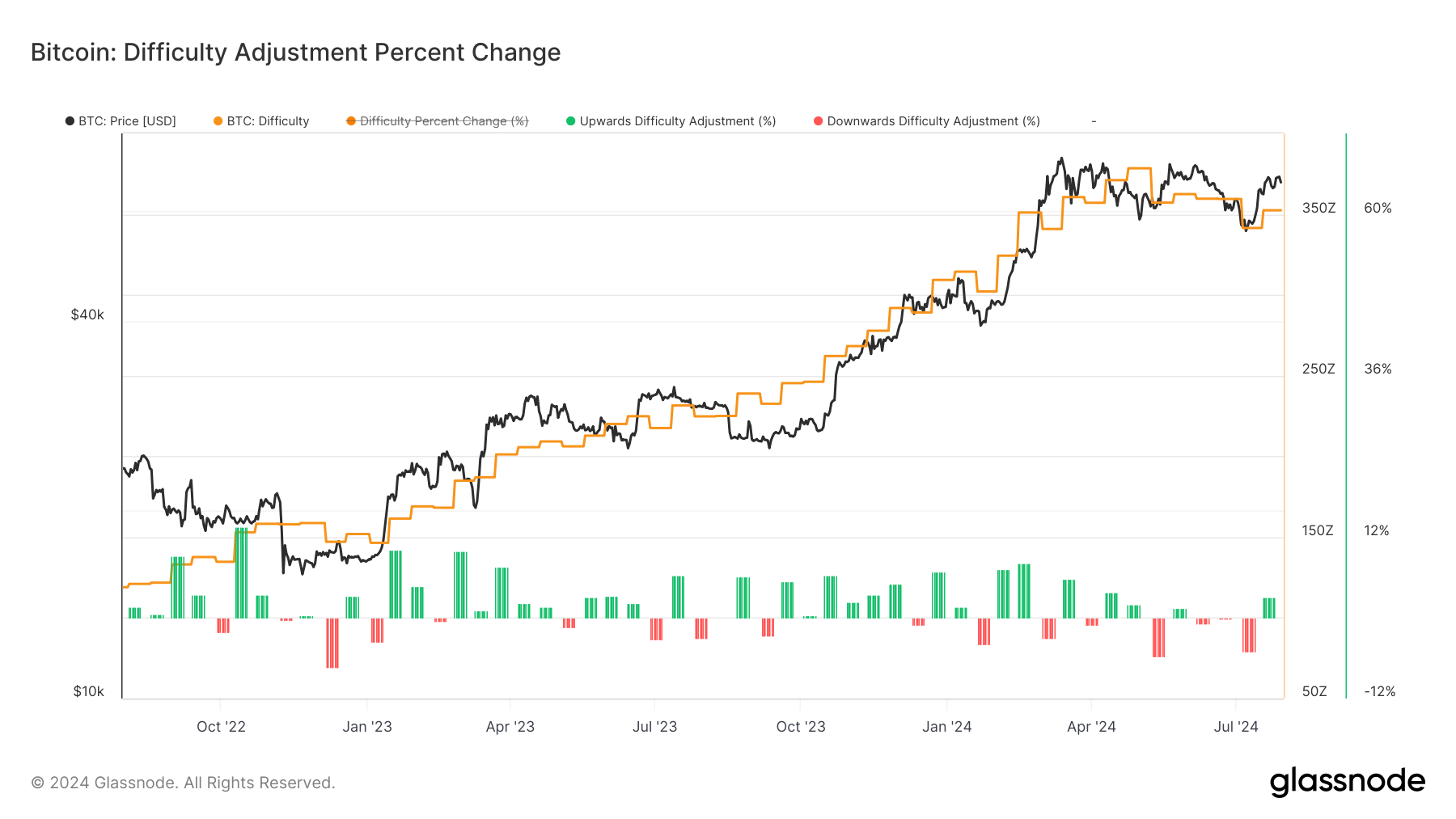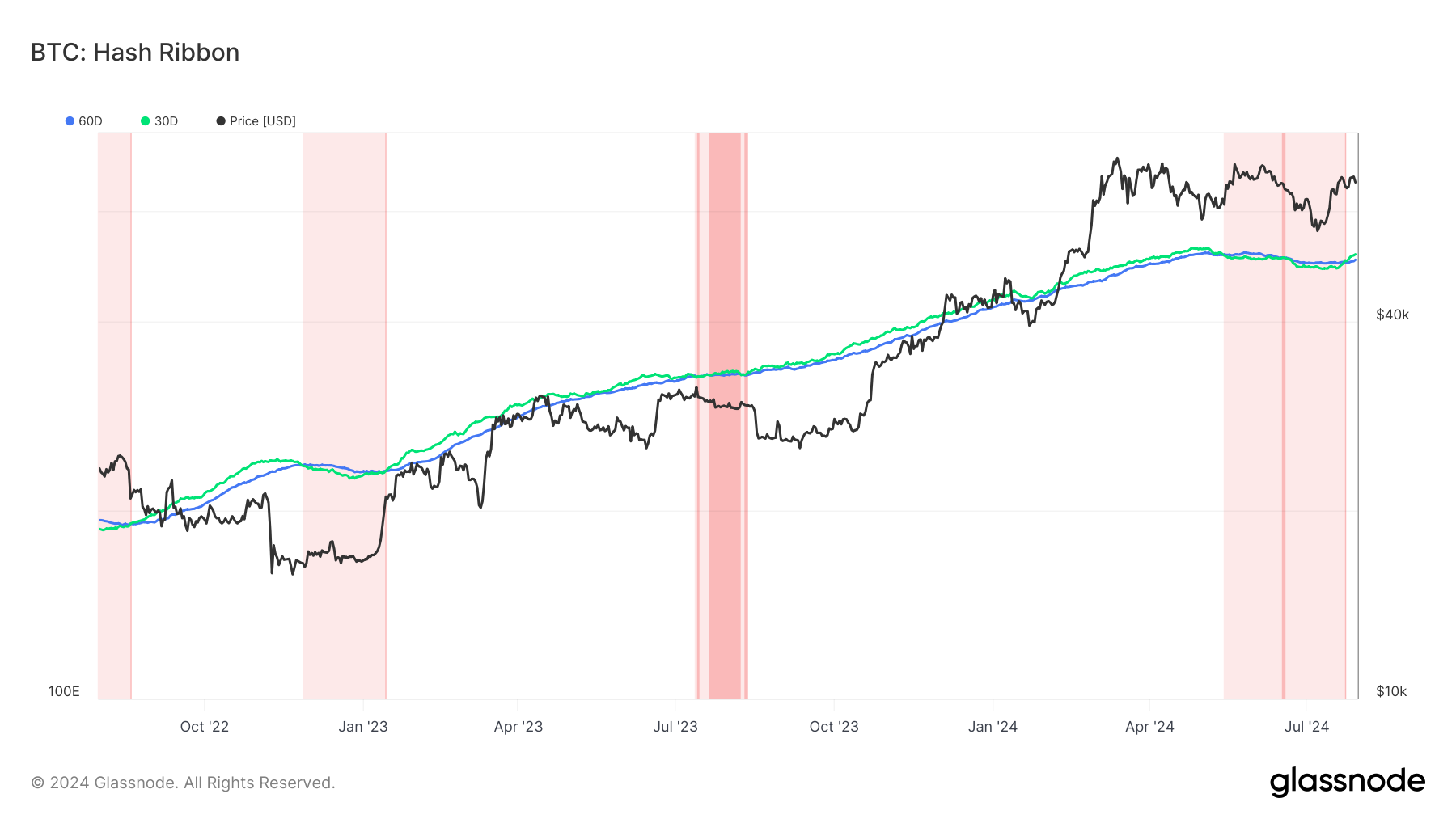Bitcoin mining is about to become more challenging as its network difficulty is set to rise by a significant 11% on July 31 at 8 A.M. This adjustment reflects the surge in the hash rate seen over the past few weeks and marks the largest increase in Bitcoin Mining Difficulty since October 2022, a month before the FTX collapse. The impending change sheds light on how Bitcoin mining is changing and how it affects both miners and the stability of the network as a whole.
Record-Breaking Hash Rate Spurs Difficulty Increase
On July 26, the Bitcoin network reached an all-time high hash rate of approximately 670 exahashes per second (EH/s), based on a 7-day moving average. This recent peak represents an 11% increase over the preceding week. The heightened hash rate, driven by increased miner participation and efficiency, has necessitated the adjustment in Bitcoin Mining Difficulty.

According to data from Glassnode, the upcoming difficulty adjustment is poised to be the largest since October 2022. The significant increase underscores the dynamic nature of the Bitcoin network, where miner competition and technological advancements continuously drive changes in mining difficulty.
End of Miner Capitulation: A Positive Indicator
The increased hash rate has led to a critical signal in the mining community—the hash ribbon indicator. This technical indicator is used to identify periods of miner distress and recovery. The recent signal indicates the end of a miner capitulation that lasted just over two months, one of the longest in recent years.
Miner capitulation occurs when mining becomes unprofitable for a segment of miners, leading them to shut down their operations. The hash ribbon indicator signaling the end of this period suggests improved miner profitability and enhanced network stability. This recovery is a positive development for the Bitcoin ecosystem, as it signifies resilience and adaptability within the mining sector.
Consequences for Bitcoin Miners and the Network
The upcoming increase in Bitcoin Mining Difficulty will have notable implications for miners and the network. For miners, the adjustment means that more computational power is required to mine new blocks, increasing the competition and operational costs. This may impact smaller mining operations that struggle to keep up with the rising difficulty.

However, the adjustment also reflects a robust and secure Bitcoin network. A higher mining difficulty indicates a more resilient network, as it becomes increasingly challenging for malicious actors to manipulate the blockchain. The continuous evolution of Bitcoin Mining Difficulty ensures the integrity and security of the cryptocurrency.
The Broader Impact on Bitcoin’s Future
The projected increase in Bitcoin Mining Difficulty coincides with key advancements in the cryptocurrency sector. The network’s adaptation to variations in hash rate and mining efficiency demonstrates the Bitcoin ecosystem’s continual growth and maturation.
Bitcoin mining plays a crucial role in maintaining the network’s decentralization and security. The upcoming adjustment in Bitcoin Mining Difficulty is a testament to the network’s ability to self-regulate and adapt to shifting conditions. This adaptability is vital for the long-term sustainability and success of Bitcoin as a leading cryptocurrency.
The end of miner capitulation, signaled by the hash ribbon indicator, further emphasizes the resilience of the Bitcoin mining community. Improved miner profitability and network stability are positive signs for the future, indicating that the ecosystem can withstand periods of difficulty and emerge stronger.
In conclusion, the upcoming 11% increase in Bitcoin Mining Difficulty on July 31 reflects the significant rise in hash rate and marks the largest adjustment since October 2022. This development signals the end of a prolonged period of miner capitulation, indicating improved profitability and stability within the mining community. As Bitcoin continues to evolve, the network’s ability to adapt and self-regulate will remain crucial for its sustained growth and security.








